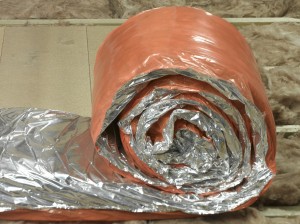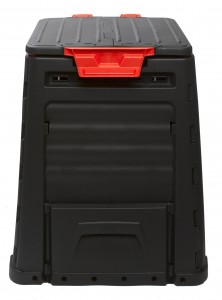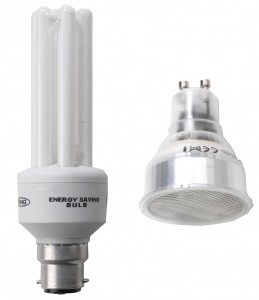Planning a greener home
There are many simple and inexpensive things you can do to have a greener home, which will save money as well as energy, and even small initiatives help. Making your house more environmentally friendly will add to its value. A new kitchen or bathroom is an investment, but even better, is an energy efficient home. Below are a number of energy saving ideas that you should consider when planning for a greener home.
Insulation

Current regulations say you should have 270mm depth of loft insulation in your roof. How much do you think you have?
- All insulation is good for the environment. Some may have better green credentials than others, but all save energy.
- Insulation is one of the most effective ways to save energy in the home. The most significant heat loss is through the walls and loft. Insulating your loft will save money and reduce carbon dioxide emissions too. See my guide – ‘Insulating a loft’.
- Curtains help to retain heat. Close your curtains when it gets dark to stop heat escaping through the windows.
- Keep out cold air and stop energy loss by draught-proofing the gaps around doors and windows. Choose from self-adhesive foam strips, rubber strips and brush strips.
- Double glazing can cut heat loss dramatically, but fitting it is costly and best left to professionals. If this is something that your home needs, first get windows double glazed in the rooms that you use most and in rooms that are most expensive to heat. You can also consider budget options such as shown in my guide – ‘Fitting double-glazing film’.
- Pipe insulation reduces heat loss from pipes and therefore keeps water hotter for longer.
- If your hot water cylinder is not insulated, fit a purpose-made insulation jacket to the cylinder.
Food and compost

Compost bins can be bought and assembled in minutes. You only need a small one, and you’ll be amazed how much garden waste it will ‘eat’ up.
- Growing some of your own produce is cost effective, healthy for you and your family and lessens the environmental impact of packing and transporting food.
- Please check out some of my ‘Growing vegetables’, and ‘Fruit gardening’ guides, for lots more information on how simple it is to grow some food in your garden.
- Put kitchen and garden waste to good use in a compost heap or bin. Alternatively, if you really don’t have the room, your local council can help you to dispose of it in an environmentally friendly way.
- For much more information on what you can and can’t compost, see my guide -Â ‘Making compost’.
Saving water
- Keep an eye out for dripping taps; turn off the tap when you brush your teeth and try to wash full loads of laundry.
- Consider low-flush toilets, as a huge amount of water used daily in most homes is flushed down the pan.
- Save mains water by collecting some of the thousands of litres of water that runs off the average roof each year in a water butt.
- Water butts are very straightforward to install and if you can’t find a convenient downpipe to connect up to on your house, what about considering adding some gutter and downpipe to a shed, or greenhouse? More about all this in my guide – ‘Fitting a water butt and diverter kit’.
Lighting

Energy saving light bulbs come in most shapes and sizes these days, so you should be able to find one that suits your needs.
- Save electricity by turning off lights in empty rooms, and by unplugging appliances that consume electricity even when they’re not in use. Anything with a standby light uses electricity.
- Energy saving bulbs use much less electricity than traditional bulbs to produce the same light, and most people cannot tell the difference. Now halogen, ‘soft tone’ bulbs and dimmable energy saving bulbs are available.
- When you shop for energy saving lighting, look for the Energy Saving Recommended logo, which guarantees good quality.
- Much more on low energy lighting in my guide -Â ‘Planning lighting’.
Heating and electricity
- Heating controls help to save money and energy as you can control when and where heating is on, and keep the rooms you use most at a comfortable temperature.
- A time programmer controls when heating and hot water is switched on and off. A room thermostat measures air temperature and maintains the temperature you choose, and thermostatic radiator valves regulate the flow of hot water to the radiators.
- A room thermostat turns the boiler off when the house has reached the right temperature.
- If you reduce the temperature of your boiler by one degree, you could save money on your energy bill. Most boilers have a dial where you can do this easily.
- Energy saving products are often marked with the Energy Saving Recommended logo, or the European Energy label. Most appliances now have an energy rating that shows you exactly how energy efficient the product is.
Putting a good proportion of the ideas and tips that I’ve provided here into practice, will make an enormous difference to not only your household bills, but also provide you with much a greener home. It really is a win win situation.
You can’t do everything at once, and so it’s best to simply set out a plan over the next few months or even years, to include greener measures in your DIY plans. Gradually, these plans become reality, and before you know it, you’ll find that you’ve done pretty much all you can to make your home as green as it can be.
